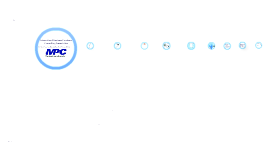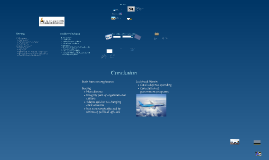Industry Analysis
Transcript: Covers only North America 2010 Revenues of $130 billion Average revenue increased 1.1% Forecasted to increase 5% to 2015 External factors Demand from foreign and domestic carriers Replacement of aging military aircraft Company Backgrounds Boeing Started by William Boeing in 1916 Anti-trust legislation in 1934 United Air Lines, United Aircraft, Boeing Airplane Merged with McDonnell Douglas in1997 Global operations, headquartered in Chicago, IL 157,000 employees 2009 revenue of $68 billion 12.1% increase from 2008 747, 777, 787, Apache helicopter, F-18, C-17, missiles, primary contractor of International Space Station Lockheed Martin Started as two separate companies Glenn L Martin Company in 1912 Loughead Aircraft Manufacturing in 1916 Both merged in 1995 Headquarters located in Bethesda, MD 140,000 employees 2009 revenue of $45 billion 5.8% increase from 2008 84% of revenue comes from US Government C-130, C-5, F-22, F-35, missiles, satellites, and other defense systems Organizational Mode Business Model Nature of the Industry 45 page Ethical Business Conduct Guideline “conduct its business fairly, impartially, in an ethical and proper manner, in accordance with the company's values and Code of Conduct, and in full compliance with all laws and regulations” Ethics hotline 8 listed values Free copy given to each employee to keep Recent lawsuit Whistle blowing from 3 internal auditors Boeing Boeing 787 Dreamliner Pioneering and solution innovation Process efficiency Conclusion F-35 Lightning Differentiating innovation Similar capabilities compared to F-22 CEO July 1, 2005 – James McNerney Was CEO of 3M for 5 years Board of Directors 13 Members Diverse backgrounds Limit as to number of other boards can sit on Supervising role Many externalities Effective leader C-17 Globemaster Process efficiency Many quality awards Saved over $90 million to date Boeing Boeing Lockheed Martin Both have strong futures Boeing More diverse Integrity part of organizational culture Adapts quicker to changing environments Not so strongly affected by whims of political officials Lockheed Martin Cuts is defense spending Cancelation of government programs Commercial division Network of entrepreneurs Many available resources Highly complex environment Shifting to interconnected teams Resources still available but allocation has been reduced Use same principles with suppliers Authority has been pushed onto suppliers 2,500 page instruction book for 777 is only 25 pages for 787 Lockheed Martin C-17 program Catalyst style Employees open to change High urgency Commercial division Catalyst style Exception 787 Dreamliner program – Coach style Operates deliberately with low urgency Should be under catalyst style 23 page Code of Ethics & Business Conduct do what’s right, respect others, and perform with excellence Ethics Officer Ethics hotline Recent lawsuits Race discrimination Whistleblower of defrauding US Government Lockheed Martin C-5 Galaxy Differentiating innovation Upgrading older aircraft 737 Drentiating innovation and process efficiency 1960’s upgraded to modern standards Aircraft, Engine, and Parts Manufacturing All four divisions Coach style Employees open to change Low urgency for change F-35 program Should be operating under catalyst style Excessive overrun costs $320 to over $382 billion Four years behind delivery date and still in development phase Aeronautics division – F-35 program Network of entrepreneurs Reorganized division to attempt to contain costs Has not worked Should move to interconnected teams Make resource allocation more strict and find ways to improve efficiency Other divisions – interconnected teams Resources being allocated to F-35 program Governance CEO April 2005 – Robert Stevens Board of Directors 11 members Required to retire at age 72 Supervising Role Many externalities Effective leader Lockheed Martin

















